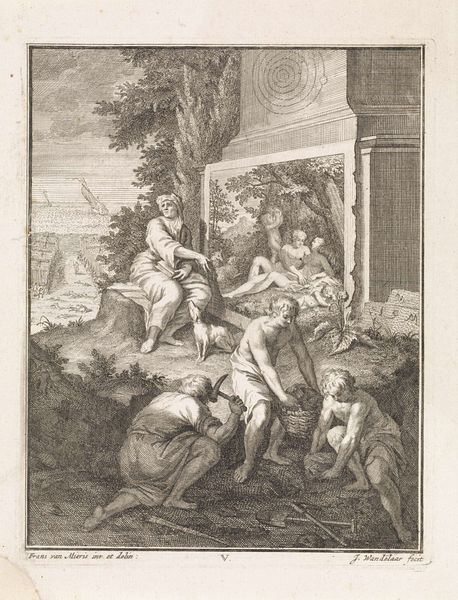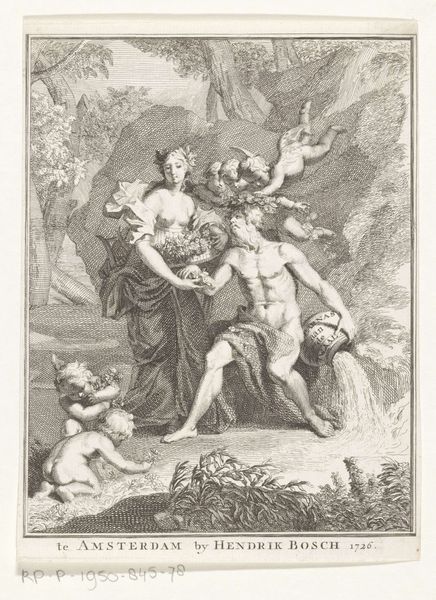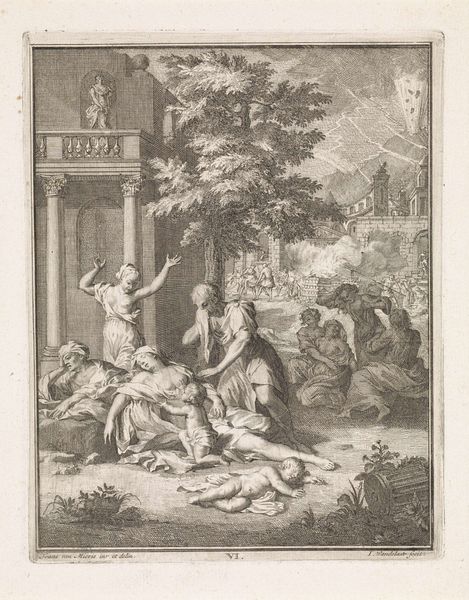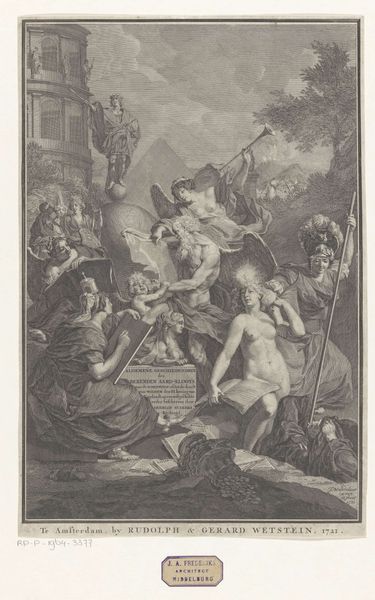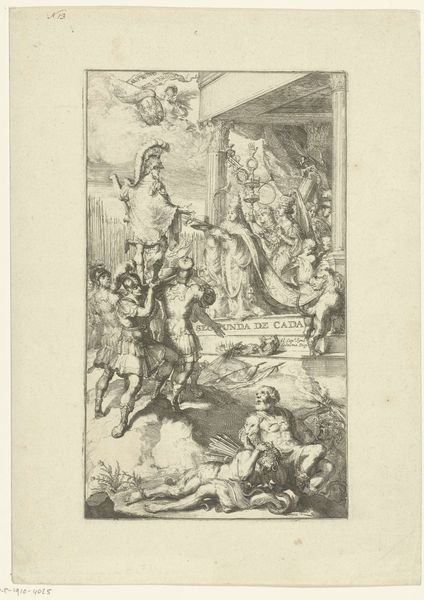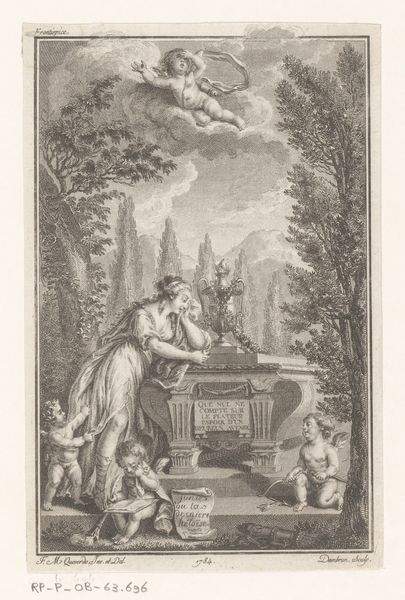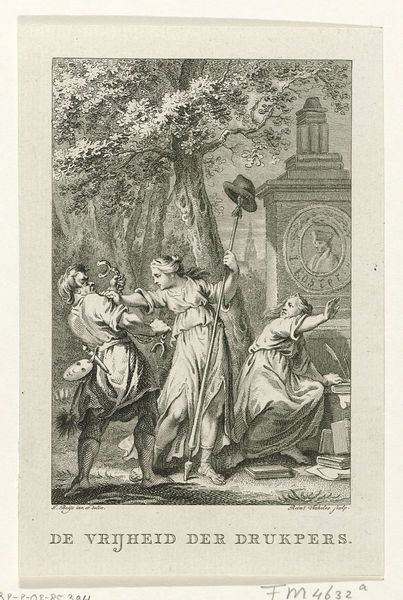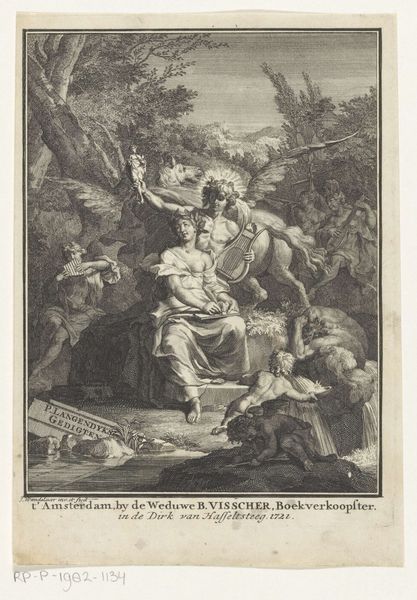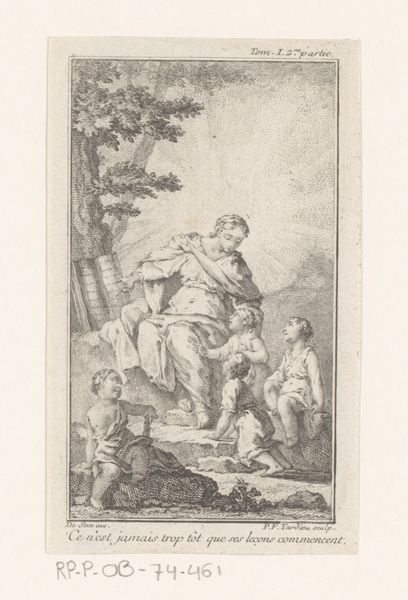
print, engraving
#
allegory
#
baroque
# print
#
old engraving style
#
landscape
#
classical-realism
#
figuration
#
history-painting
#
engraving
Dimensions: height 426 mm, width 308 mm
Copyright: Rijks Museum: Open Domain
Editor: Here we have Pieter Tanjé's 1737 engraving, Aeneas Rescuing His Father from Burning Troy. It's a busy composition, with lots of figures and swirling lines, but what strikes me most is how staged it all seems. What do you make of it? Curator: It's fascinating how Tanjé, working within the Baroque style, uses this classical subject. Aeneas carrying his father, Anchises, is, on the surface, a heroic act of filial piety. But, what power structures are at play here? Editor: Power structures? Could you expand on that? Curator: Consider the political climate of 18th-century Europe. Scenes of antiquity were frequently deployed to legitimise contemporary power. How might this image reinforce ideas about lineage, duty, and the preservation of tradition within aristocratic circles? Aeneas, in saving his father, becomes a symbol for preserving the old order. How does this align, or perhaps clash, with Enlightenment ideals that were starting to bubble up at the time? Editor: That's a completely different way of seeing it! I was focusing on the literal story, but now I see it as a commentary on social hierarchy. Curator: Exactly! And consider the women depicted – as weeping figures, absent any real agency, embodying grief. Their marginalization within this narrative reinforces societal roles and expectations of the time. Tanjé isn't simply illustrating a myth; he's reinforcing the gendered and political norms of his era. Editor: I’m definitely seeing the piece through a new lens now. It makes me think about who gets to be remembered as a hero and what kind of societal values they upheld. Curator: Precisely. It's about interrogating the narratives that these images perpetuate and what histories they choose to exclude.
Comments
No comments
Be the first to comment and join the conversation on the ultimate creative platform.
